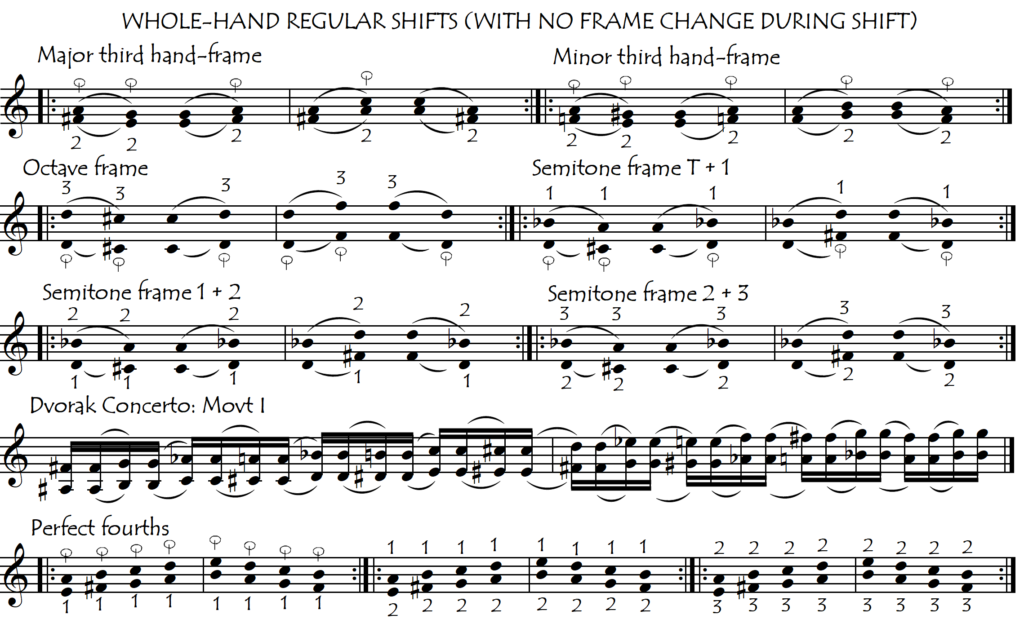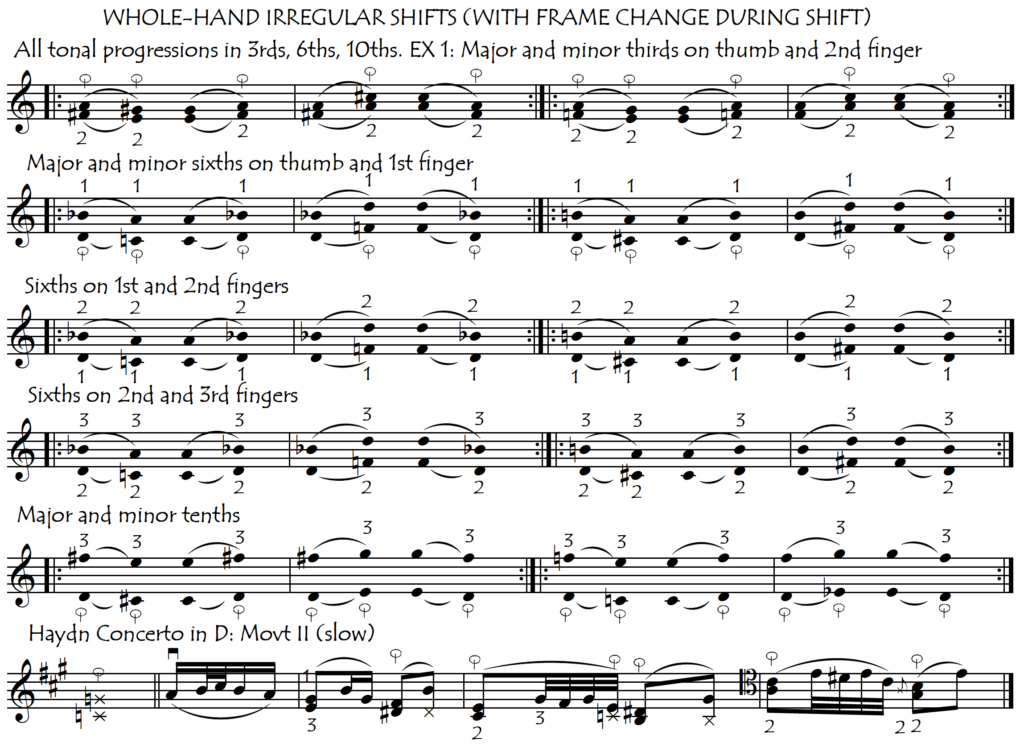Shifting On The Cello: Shifting Within Thumb Position
Here we are talking exclusively about shifts within thumbposition, independently of which fingerboard region (Neck, Intermediate or Thumb) we might be in. In other words, the defining characteristic of the shifts that we will discuss here, is that the thumb remains on the fingerboard before, during, and after the shift. Shifts On (and To) the Thumb fit into this category but have their own separate page (click on the highlighted link).
On this page we are looking at “Whole-Hand Shifts“, in which the entire hand moves. For shifts in which one part of the hand remains still (which are very common in thumbposition), see the page Non-Whole-Hand Movements in Thumbposition.
We will categorise (differentiate) the shifts within thumbposition according to their finger choreography:
Samefinger Shifts in Thumbposition
Assisted Shifts in Thumbposition
Scale/Arpeggio-Type Shifts In Thumb Position
DOUBLESTOPPED SHIFTING WITHIN THUMBPOSITION: WHOLE-HAND REGULAR AND IRREGULAR SHIFTS
Shifting on (or to) doublestops is much more difficult than shifting to single notes but within doublestopped shifts we also have an “order-of-difficulty” progression, between two different types of shifts, which are, in order of increasing difficulty:
- shifts in which the handframe stays the same
- shifts in which the handframe changes during the shift
This is best illustrated with some examples:

In the above examples, each finger of the doublestop moves the same distance, hence the handframe does not change during the shifts and the hand can move like a solid, stable “block”. We will call these “Whole-Hand-REGULAR” shifts. These are the easiest type of doublestopped shifts. Now, let’s look at Whole-Hand IRREGULAR shifts:

In these above examples, the distance moved by each finger of the doublestop during the shift is different, hence the handframe must change during the shift, contracting or extending the distance between the playing fingers by one semitone. A change in the size of the handframe implies a change in the hand’s posture. When this occurs during a shift, this can be a source of both aural difficulty and ergonomic instability which can make these shifts considerably harder to play in tune. We will call these “Whole-Hand-IRREGULAR” shifts. With the thumb up on the fingerboard, the possibilities for changing the distances between thumb and fingers (handframe size) are vastly greater than in the normal (not thumbposition) Intermediate and Neck Region hand postures. Therefore it is in thumbposition that we will most often find ourselves having to face the difficulties of these types of shifts.
The following links open up material for working on (and explaining) this subject in greater detail:
Whole-Hand Regular and Irregular Doublestopped Shifts in Thumbposition: BASIC AND EXPLANATION
Whole-Hand Irregular Doublestopped Shifts On The Thumb And Any Other Finger: EXERCISES
